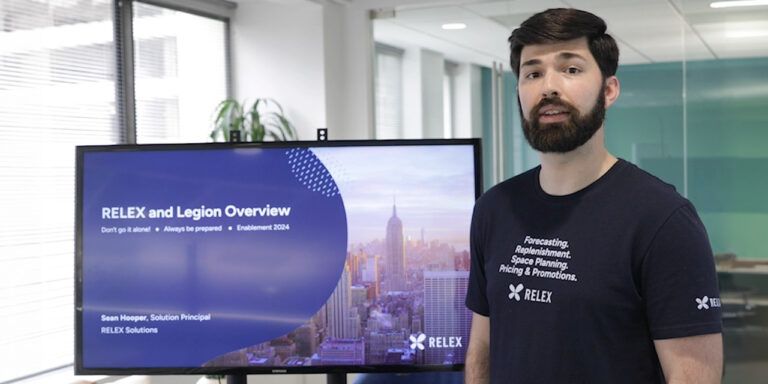Effectively managing staff turnover has long been a priority for retailers. However, in recent years, the steady trickle of leavers has turned into a tidal wave. To navigate this changing landscape, retailers must prioritise optimising recruitment, retention, and resource management.
In this article, we’ll explore three significant challenges employee turnover poses and how you can address them effectively.
Retail today is being hit by the great attrition
A high staff turnover rate is nothing new for retail. In the UK, for example, it’s been averaging 33% for years – almost double that of other industries. In some cases, retailers have reported attrition numbers close to or more than 100% annually. Improving retention has, therefore, always been a goal. However, finding replacements for leavers hasn’t typically been an issue. But that’s changed now.
The global pandemic and the war in Ukraine have driven the worst cost-of-living crisis in decades. The aftermath has spurred European retail workers, like their peers around the globe, to leave their jobs. Last year, as many as 1 in 5 employees in the UK planned to quit the retail industry. And in Germany, almost half of retail businesses reported staff shortages.
What are the reasons for this exodus? According to a new study, it’s due to increased workloads and demands. To address this, retailers need to manage three significant challenges. Let’s take a look.
Challenge 1: Siloed planning is the opponent of optimised workforce management
In retail, driving store traffic and enhancing the shopping experience are essential. But how can this be achieved in times of staff shortages?
One key factor is ensuring that the right products are available in stores at the right time. However, ordering and delivering these products directly impacts staffing needs. All of which becomes more complicated when dealing with changing consumer behaviours and the rise of omnichannel retail.
Further, retailers often create supply chain and workforce plans separately, leading to significant scheduling issues: Understaffing results in poor customer service, while scheduling staff at the wrong time causes operational inefficiencies. And having too many idle employees during slow periods equals higher labour costs. Ultimately, these issues result in low service levels, lost sales, and increased expenses.
The solution:
To overcome the effects of siloed planning, you should embrace integrated technologies as your co-pilot. Using tools that connect the supply chain with workforce operations enables you to optimise workforce utilisation and minimise the adverse effects of turnover. Moreover, modern technology solutions facilitate communication and collaboration between departments, ensuring that your staffing aligns with ordering and delivery schedules.
Challenge 2: Scheduling by gut feeling is a headquarters nightmare
Traditional workforce scheduling is highly manual and driven by planners’ gut feeling. As such, it often leads to inaccuracies and inefficiencies. The reason is simple. A lack of data-driven insights hampers the ability to forecast demand and locate resources effectively and accurately. While this approach may be familiar, it falls short in today’s dynamic retail landscape.
Many factors, such as the weather, nearby events, and holidays significantly impact demand, making accurate forecasting essential to smooth operations. Add labour shortages and the considerable expense of over or understaffing to the mix, and scheduling the exact number of employees needed that day becomes even more critical.
Balancing customer service levels and workforce efficiency is an absolute must that requires more than simply streamlining operations. It demands insights and agility to ensure that the right people with the right skills are scheduled to do the right tasks at the right time.
The solution:
Embracing AI-powered solutions as your workforce planning assistant gives you the power to automate and improve the planning process based on accurate forecasts. AI algorithms analyse vast amounts of data, incorporating external factors like seasonality, weekday shopper traffic, and events. These insights optimise workloads with fixed and forecast-based tasks, resulting in schedules that match contractual terms, regulations, and employee preferences. The best part is that managers retain the ability to edit and tweak schedules based on their unique, store-specific needs and experiences, ensuring a personal touch.
Challenge 3: Manual workforce management chaos
Managing a workforce that includes full-time, part-time, evening and weekend employees is complex. Employees’ frequent swapping of shifts further adds to the intricacy of maintaining an up-to-date schedule. Failing to effectively communicate and inform employees about their hours can result in a woefully understaffed shop floor.
Regrettably, many retail businesses still rely on outdated manual spreadsheets as their primary scheduling tool, despite their inherent limitations – especially for larger enterprises. Store managers spend excessive time filling out spreadsheets, which quickly become obsolete and are prone to human error. Even a minor mistake, such as a missing decimal point, can compromise schedule accuracy.
From a Headquarters perspective, spreadsheets exist in isolation from broader reporting systems, hindering the ability to gain comprehensive insights. Integrating them with other systems to extract meaningful data and align them with company-wide productivity strategies can be cumbersome and time-consuming.
The solution:
Adopting a comprehensive workforce management solution is crucial to future-proof your business. Modern solutions offer retailers new levels of flexibility and agility that enable managers to identify gaps in the schedule easily, communicate openings to available employees swiftly, and request their availability to fill the shifts.
Self-service features empower employees to respond promptly to these requests, enabling swift adjustments and minimising operational disruptions. Streamlined workflows can save your managers up to 3.5 hours of administrative work per month, resulting in substantial cost savings. One of tamigo‘s retail customers, with 450 stores, experienced monthly savings of 200,000 Euros thanks to such efficiency improvements.
The true value of optimised workforce operations
The current decline in employee retention and concurrent increase in staff shortages are forcing retail companies to schedule more efficiently than ever before. RELEX and tamigo have teamed up to enable retailers to realise optimal workflows with the help of AI in a single solution for all departments, locations, and countries.
The seamless workforce management solution from tamigo, combined with workload forecasting and shift optimisation from RELEX, enables planners to publish thousands of high-quality, compliant shifts directly to tamigo’s web and mobile solution at the touch of a button. Powered by AI, RELEX covers all in-store tasks down to 15-minute intervals while factoring in demand drivers to improve your business’s daily retail operations and leverage real work drivers to minimise over- and understaffing. With optimal schedules in place, you can easily handle all the subsequent workforce processes.
Unleash your full operational potential with complete workforce management and optimisation
Is it time you optimise your company-wide workforce operations? We’ve got you covered! Learn more about our workforce management integration with tamigo.






